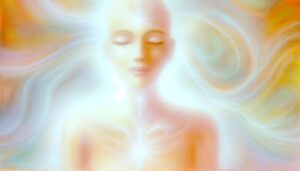Spiritual Meaning of Praying Hands: Connection
The gesture of praying hands symbolizes a deep reverence, humility, and a profound connection to the divine. Historically, it has served as a universal expression of supplication and respect across various cultures and religions.
In Christianity, it exemplifies heartfelt commitment to spiritual practice and acknowledgment of God’s sovereignty. Eastern traditions like Hinduism and Buddhism see it as a reflection of inner divinity and interconnectedness.
Beyond its spiritual connotations, the act of bringing hands together fosters tranquility and enhances emotional well-being. This timeless gesture invites a deeper exploration of its rich, cultural, and emotional significance.
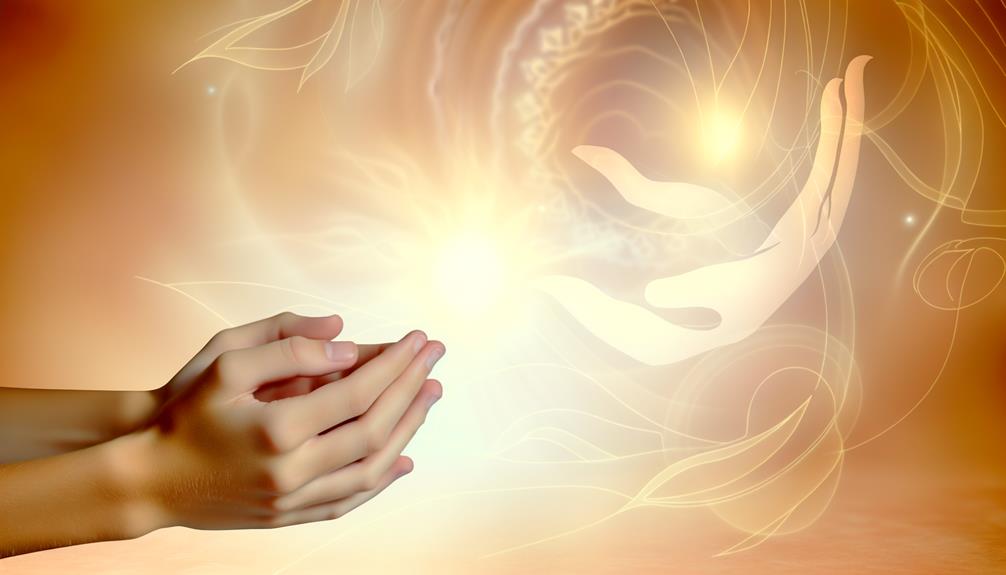
Spiritual Meaning of Praying Hands: Symbolism and Significance
| Symbol | Meaning | Spiritual Insight |
|---|---|---|
| Hands Together | Unity | Represents oneness with the divine |
| Palms Pressed | Surrender | A gesture of humility and devotion |
| Fingers Pointed Upward | Aspiration | Reaching toward higher spiritual realms |
| Stillness | Inner Peace | Encourages mindfulness and calm |
| Traditional Prayer Pose | Faith | Sign of trust and spiritual commitment |
Historical Origins
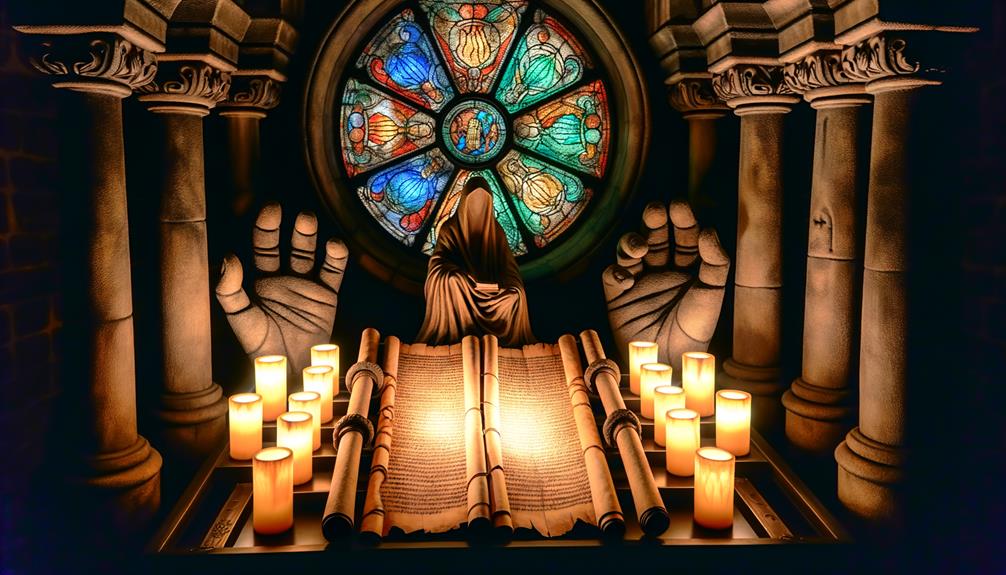
The historical origins of praying hands trace back to ancient civilizations, where the gesture symbolized reverence and supplication across various cultures.
In Mesopotamia, this simple yet profound act was a way to express humility before the divine. Similarly, in ancient Egypt, hands lifted in prayer were seen in hieroglyphs, reflecting a deep connection with the gods.
As we explore these origins, it becomes evident that praying hands serve as a bridge between humanity and the divine, transcending time and geography. This unifying gesture reveals a universal human desire to reach out to something greater, to seek comfort, guidance, and solace.
The act of bringing hands together in prayer continues to echo through centuries, an enduring proof of our spiritual nature.
Cultural Variations
Across different cultures, the act of bringing hands together in prayer manifests uniquely, reflecting the diverse ways humanity seeks to connect with the divine. In Hinduism, palms pressed together at the chest, known as Anjali Mudra, symbolizes the greeting of the divine within others.
In Buddhism, the gesture, often accompanied by a bow, represents deep respect and humility. In Islamic tradition, hands are raised to shoulder level, palms facing the sky, symbolizing supplication and surrender to Allah’s will.
| Culture | Gesture Description |
|---|---|
| Hinduism | Anjali Mudra: Palms pressed together at the chest |
| Buddhism | Palms together with a bow, denoting respect and humility |
| Islam | Hands raised to shoulder level, palms facing upward |
These variations highlight the universal yet distinct expressions of spiritual yearning.
Symbolism in Christianity
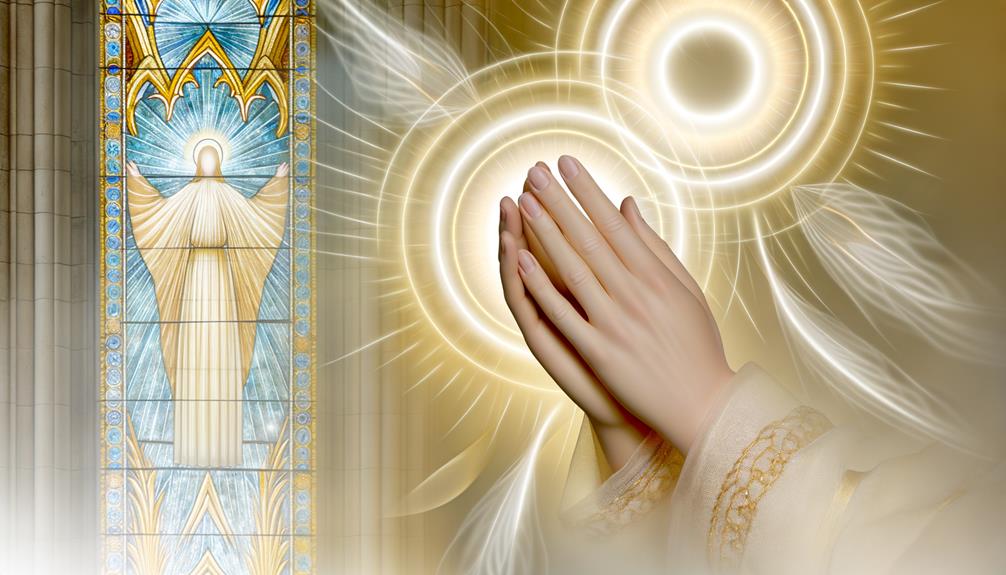
In Christianity, the gesture of praying hands serves as a profound symbol of devotion, humility, and the intimate connection between the individual and God. This simple yet powerful gesture encapsulates several key elements of the Christian faith:
- Devotion: Praying hands represent a heartfelt commitment to spiritual practice and a life guided by faith.
- Humility: The act of bringing hands together signifies submission, recognizing the sovereignty of God over oneself.
- Connection: This posture fosters a sense of closeness and personal relationship with the divine, facilitating a moment of deep spiritual communion.
Reflecting on these aspects, the praying hands become more than a gesture; they transform into a conduit for expressing one’s innermost reverence and trust in the divine presence.
Eastern Religious Perspectives
Turning our gaze to Eastern traditions, we find profound expressions in gestures such as the Buddhist Anjali Mudra and the Hindu Namaste.
These gestures, rich with spiritual significance, invite us to contemplate the essence of reverence and interconnectedness.
They remind us that the act of joining hands transcends mere ritual, becoming a bridge to deeper spiritual awareness.
Buddhist Gesture Symbolism
How does the simple act of joining hands in prayer resonate so deeply within the rich tapestry of Buddhist symbolism?
In Buddhism, this gesture, known as ‘Anjali Mudra,’ serves as a profound expression of reverence and unity. Its spiritual depth can be understood through three key aspects:
- Unity: The joining of hands symbolizes the coming together of mind and body, fostering inner harmony.
- Respect: It is a gesture of deep respect, not just for deities, but for all beings, reflecting the interconnection of all life.
- Mindfulness: Engaging in Anjali Mudra encourages a heightened state of mindfulness, grounding the practitioner in the present moment.
This simple yet potent gesture encapsulates core Buddhist values, serving as a bridge to deeper spiritual awareness.
Hindu Namaste Significance
The Namaste gesture, a simple act of pressing the palms together with a slight bow, embodies profound spiritual and cultural significance within Hinduism, symbolizing the recognition of the divine within each individual.
This sacred salutation is more than a greeting; it is a spiritual acknowledgment that transcends the physical domain, uniting souls in mutual respect and reverence.
By bringing the hands together near the heart, Namaste signifies the unity of mind and spirit, fostering a sense of inner peace and harmony.
This act of humility and gratitude reminds us of our interconnectedness, urging us to honor the divine presence in everyone we encounter.
Consequently, Namaste serves as a bridge, connecting individual consciousness with universal sacredness.
Psychological Impact
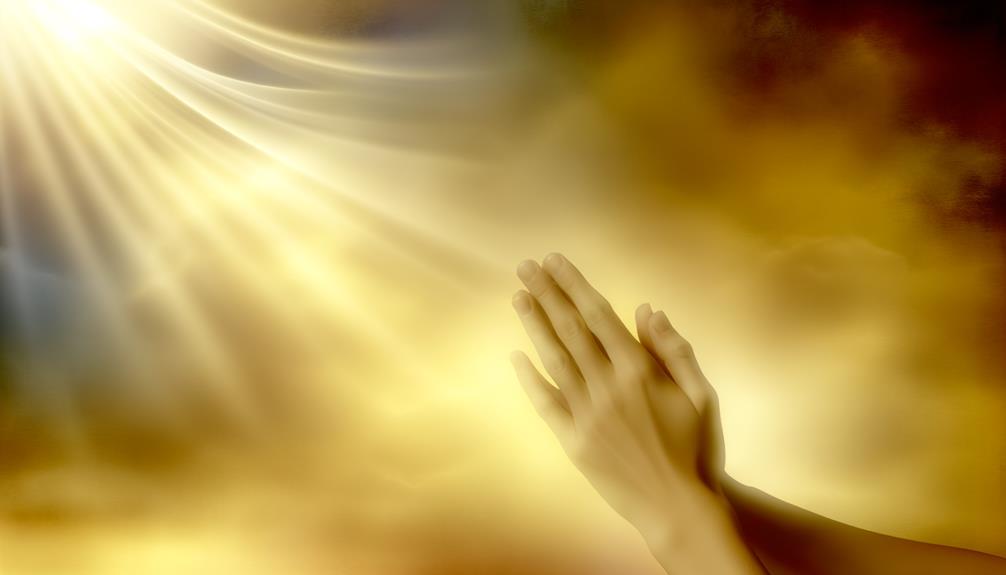
Engaging in the act of bringing one’s hands together in prayer can evoke a profound sense of inner peace and emotional well-being. This simple yet significant gesture can have a transformative psychological impact, fostering a deeper connection with oneself and the surrounding world.
Reflecting on the practice reveals several key benefits:
- Stress Reduction: The physical act of praying hands can activate the parasympathetic nervous system, promoting relaxation and reducing stress.
- Mindfulness: This gesture encourages mindfulness, making individuals more present and aware of their thoughts and emotions.
- Emotional Resilience: Regular practice can build emotional resilience, helping individuals cope with life’s challenges with greater ease.
These elements collectively enrich one’s spiritual and emotional landscape, nurturing a harmonious inner state.
Praying Hands in Art
As we turn our attention to the representation of praying hands in art, it becomes essential to recognize their iconic symbolism that transcends time and cultural boundaries.
These artistic depictions not only reflect historical contexts but also illuminate the profound spiritual influence that praying hands have exerted across various cultures.
Through this exploration, we gain insight into how art captures the essence of spiritual devotion and reverence.
Iconic Artistic Symbolism
Throughout history, the depiction of praying hands in art has served as a profound symbol of faith, humility, and the human quest for spiritual connection. These evocative images transcend cultural and temporal boundaries, offering a universal language of devotion.
The iconic symbolism of praying hands in art can be appreciated through:
- Unity: The hands, often depicted together, symbolize communal prayer and collective spiritual effort.
- Surrender: The open, upward-facing palms represent a gesture of surrender and openness to divine will.
- Hope: This posture conveys a sense of hope, embodying the human yearning for divine intervention and guidance.
Reflecting on these elements, one gains a deeper understanding of how art encapsulates the essence of spiritual longing and the timeless search for meaning.
Historical Artistic Context
Examining the historical artistic context of praying hands reveals how this enduring motif has evolved across different periods and cultures, each iteration reflecting the prevailing spiritual and societal values of its time.
In medieval Europe, praying hands were prominently featured in religious manuscripts and altarpieces, epitomizing piety and devotion.
The Renaissance saw artists like Albrecht Dürer immortalize this gesture in detailed sketches, symbolizing human connection to the divine.
Progressing into the Baroque period, the motif became more dynamic, embodying emotional fervor and dramatic spirituality.
Each artistic evolution not only chronicles aesthetic shifts but also mirrors humanity’s evolving relationship with faith, inviting us to reflect on our own spiritual journeys within the broader tapestry of art history.
Cultural Artistic Influence
The depiction of praying hands in art transcends mere representation, serving as a profound symbol of spiritual yearning and cultural expression across various societies. In many cultures, hands are not only tools for action but also carriers of intention and belief. The spiritual significance of the right hand is particularly noteworthy, as it is often associated with blessings, righteousness, and divine favor. This duality of function and meaning elevates the imagery of praying hands, inviting observers to reflect on their own spiritual journeys and the intrinsic connections they share with the divine.
Historically, this imagery has woven its way into the fabric of artistic traditions, encapsulating human acts of devotion and introspection. Artists have harnessed this emblem to convey deeper meanings, reflecting the universal quest for connection with the divine.
Consider the following key influences:
- Renaissance Art: Masterpieces like Albrecht Dürer’s ‘Praying Hands’ epitomize piety and human frailty.
- Eastern Iconography: In Buddhist and Hindu traditions, folded hands signify respect and meditation.
- Modern Interpretations: Contemporary artists reinterpret praying hands to explore themes of faith, hope, and resilience.
This enduring motif continues to resonate, bridging diverse cultural landscapes.
Modern Interpretations
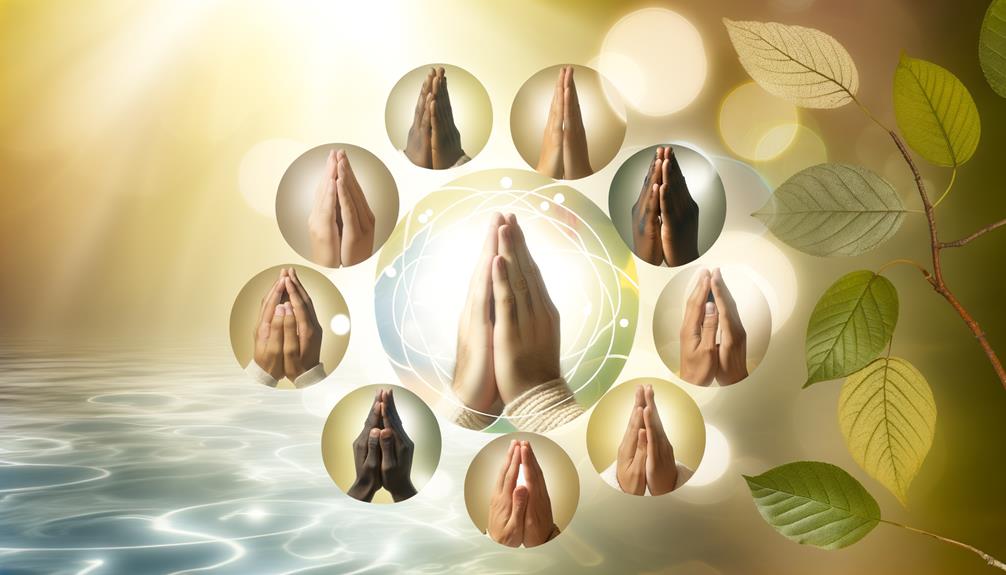
In today’s world, the gesture of praying hands has evolved to symbolize a universal expression of gratitude, humility, and connection beyond its traditional religious connotations. This simple yet profound gesture resonates deeply in a multicultural, interconnected society.
It serves as a silent acknowledgment of shared human experiences and the innate longing for peace and understanding. Modern interpretations embrace its versatility, employing the gesture in moments of silent reflection, mutual respect, or even virtual communication.
The praying hands embody a collective hope, transcending language and cultural barriers. They remind us to pause, acknowledge the present moment, and cultivate a sense of inner peace and unity.
In this way, the gesture continues to inspire and connect individuals across diverse walks of life.
Personal Reflections
Many individuals find that the act of bringing their hands together in prayer fosters a profound sense of inner tranquility and connection to something greater than themselves.
The ritual of praying hands can evoke deep personal reflections, allowing one to:
- Cultivate Gratitude: This simple gesture can serve as a daily reminder to appreciate life’s blessings, fostering a mindset of thankfulness.
- Seek Guidance: In moments of uncertainty, praying hands can be a conduit for seeking wisdom and clarity from a higher power.
- Experience Unity: This act can create a sense of belonging, as it connects individuals with a broader spiritual community.
Through these personal reflections, praying hands become more than a ritual; they transform into a meaningful practice that enriches the human experience.
Conclusion
The praying hands, a symbol as ancient as time, weave through the tapestry of human history, embodying reverence, hope, and spiritual connection.
Across cultures and religions, this gesture transcends mere ritual, offering solace and a sense of unity.
In art and modern interpretations, the praying hands continue to inspire, reminding one of the profound, shared quest for meaning and peace.
This timeless emblem stands as a beacon, illuminating the path toward spiritual enlightenment and inner tranquility.



